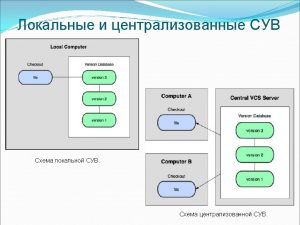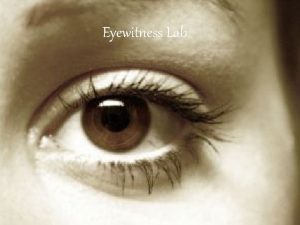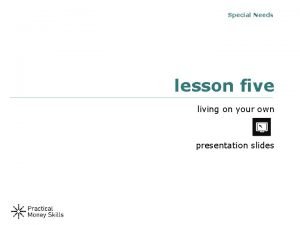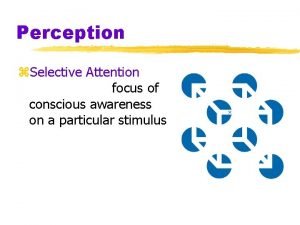1 Your conscious awareness of your own name
















- Slides: 16

1. Your conscious awareness of your own name and selfidentity depends primarily on the normal functioning of your: A. Cerebellum B. Amygdala C. Hypothalamus D. Sympathetic Nervous System E. Cerebral Cortex

2. The most extensive regions of the cerebral cortex, which enable learning and memory, are the: A. B. C. D. E. Reticular Formation Medulla Sensory Areas Cerebellum Association Areas: On Cerebral Cortex • Not Directly involved in Conscious Thought, Sensory Functions, or Motor Functions • Combine Elements from various regions of the cortex & rest of the brain • Enables Learning & Memory (Recognizing faces, Navigating your neighborhood, anticipating punishment)

3. A random error in gene replication is known as a: A. Gender Schema B. Genome C. Mutation D. Natural Selection E. Heritability

4. Evolutionary psychologists would be most likely to predict that men will marry women who are _____than they are. A. Less wealthy B. Less physically attractive C. More sexually experienced D. Younger Mating Preferences: Men: (Spreading your seed Successfully) • Young (Peak Fertility) • Hips wider than waists • Infatuation wains after 3 -5 years Women: (Long-Term) • Much Pickier: 9 Mos of Pregnancy • Maturity, Dominance • Ability to support & protect offspring Science of Sex Appeal

Genetics 5

Mechanics of it… Chromosomes: Threadlike structures containing DNA 46 Total (23 pairs: 1 from each parent) Found in every Cell Nucleus Genes: Units of DNA that make up Chromosomes Control production of proteins 30, 000 in your body Either Active (Expressed) or Inactive 96% genetic similarity to Chimps! Chromsome map 6

Sex Chromosomes Determined by 23 rd Pair of Chromosomes Men: XY Women: XX Turner’s Syndrome (Single X): Physical abnormalities (Shortness, Webbed necks, etc. ). Klinefelter’s Syndrome (Extra X): Extreme Introversion & Sexual dysfunction. Fragile X: Most common form of inherited mental Disability & Autism in boys. 7

We live in a patriarchal world… 8

Brain differences between boys and girls Boys brains are bathed in Testosterone in womb Males 1. Brains are 10% Larger Females 1. Brains are Smaller (More Gray Matter: Slower Processing) 2. Inferior-Parietal Lobe bigger in boys (More dense white matter: Faster Processing) 2. Language Processing areas larger (Numbers: Better at Math? ) 3. Larger Parietal Cortex (Learn to speak ≈ 1 Yr. before boys) 3. Thicker Corpus Callosum (Stronger Spatial Capacity) (Language Processing on both sides) 4. Larger Frontal Lobes (Better Decision making skills & Emotional Regulation) 5. Larger Limbic System (Better at picking up Emotional Cues) 6. Produce Less Serotonin (Much higher rates of depression)

Genes and Inheritance Genotype – Inherited Instructions within genetic code Phenotype – An organism’s Actual characteristics Genetic Predispositions can be activated/Kept turned off by the Environment! 10

Behavior-Genetics Study of the relationship between nature/nurture Nature Twin Studies Monozygotic (100%) 1 egg, 1 sperm Vs. Fraternal (50%) 2 eggs, 2 sperm Adoption Studies Bio. =Nature Adopt. =Nurture Intelligence Personality Emotional Stability Shyness Happiness Divorce (5. 5 x vs. 1. 6 x) Disorders Autism (96% vs. 24%) Schizophrenia Addiction Nature Personality Intelligence Nurture +. 88 vs. +. 69 Together Apart Nurture Values Political Beliefs Religious Beliefs 11

Evolution – The gradual process of biological change that occurs in a species as it adapts to its environment Evolution has fundamentally shaped psychological processes because it favors genetic variations that produce adaptive behavior 12

Evolution and Natural Selection Mutations – Genetic variations, which occur randomly, especially during the recombination of chromosomes in sexual reproduction Natural selection – The driving force behind evolution, by which the environment “selects” the fittest organisms 13

How Natural Selection Works Environmental pressure (changes in the environment) Competition (for resources) Selection of fittest phenotype (from among a variety of phenotypes) Reproductive success (genotype corresponding to fittest phenotypes passed to next generation) Frequency of that genotype increases (in next generation) 14

Evolutionary Psychology We are predisposed to behave in ways that promoted our ancestors’ surviving & reproducing, but that might not help us now. Humans are more likely to be afraid of spiders, snakes, & heights than guns & electricity Finding the scent of relatives to be “unsexy” Enjoying the taste of sweets and fats (used to allow us to overcome famine) 15

Football & The Brain This is Your Brain on Football 16
 Your conscious awareness of your own name
Your conscious awareness of your own name What type of sae is when you own your own business
What type of sae is when you own your own business Cvs privacy awareness training answers
Cvs privacy awareness training answers Circle of sexuality
Circle of sexuality What is your name and how old are you
What is your name and how old are you Effortful processing definition
Effortful processing definition Name all the lines name all the segments name all the rays
Name all the lines name all the segments name all the rays Hello my name is betty
Hello my name is betty Git global user name
Git global user name Test your awareness whodunnit answers
Test your awareness whodunnit answers How to create your own top level domain
How to create your own top level domain Create your own parable
Create your own parable Write your own parable
Write your own parable Making new words your own lesson 20
Making new words your own lesson 20 The life you save
The life you save The life you save may be your own title meaning
The life you save may be your own title meaning Lesson four living on your own
Lesson four living on your own






























